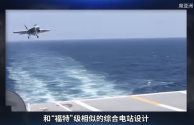this is why I think SMR+combustion combo might be the way to go for 004, with SMR for base load and a combustion engine for peak load.
there is a theoretical basis for this in civil electrical engineering.
Thus these plants usually runs at 100% of capacity. That means that the most efficient nuclear power capacity is to build as much as the lowest constant demand - the base load.
Why don't all countries with the capability simply have 100% reactors then? Not only because of expense, but because demand varies throughout the day. Electrical power in general cannot be stored at scale, demand must be kept up with supply instantaneously.
especially over long periods of time. Likewise, demand varies throughout the course of carrier operations. Sometimes the ship is at cruise and reactor power is overgenerating. At other times it needs massive power for flight ops to work.
Why has this not been a problem in the past? EMALs is very different in terms of power requirement than steam catapult. Steam catapult uses gas expansion principle. It requires a reservoir of steam, which is generated by constant heat from the boilers, which reactors can provide. Nimitz has a huge steam reservoir and this is why steam catapults are so reliable and successful. It does not require electricity, because the steam reservoir is actually an energy storage device - the energy is stored in the enthalpy of vaporization of water.
EMALS uses electricity. The peak electrical demand during flight ops is much higher than the baseload electrical demand. That means complicated long term storage schemes must be used. These have reliability issues, especially in a shooting war. Large batteries, capacitors and flywheels do not like being shot. They tend to explode or light on fire when shot. They also have relatively low energy density.
The alternative to energy storage is to just generate it on the spot. In civil electrical engineering, the fastest starting generation stations are gas turbines. A civilian gas turbine can go from stationary to full power at 150+ MW within 10 minutes. A naval gas turbine which is smaller and optimized for very fast startup can probably go from stationary to full power within 5 minutes.



